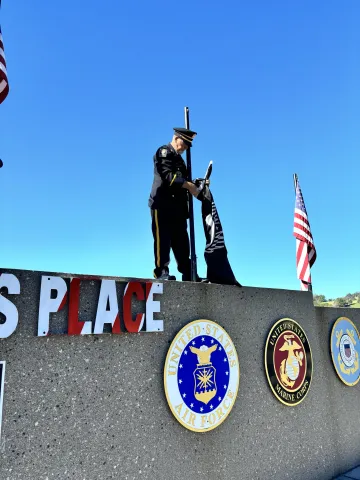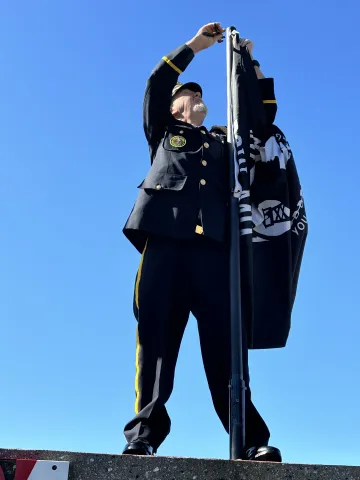FLAGS

It’s all about respect. Many people are unaware of the protocol for the American flag. The United States Code is a consolidation of the general and permanent laws of the United States. It is prepared by the Office of the Law Revision Counsel of the United States House of Representatives. Concerning the American flag and showing respect for this flag, United States Code 4 states that the flag should “be hoisted briskly and lowered ceremoniously”. It may not be used for advertising purposes and no part of the flag should ever be used as a costume or athletic uniform or used as wearing apparel, bedding or drapery. The flag should never be displayed upside down unless trying to convey a sign of distress or great danger. And our flag should never touch anything beneath it, even the floor. It is the universal custom to display the flag only from sunrise to sunset. However, the flag may be displayed 24 hours a day if properly illuminated during the hours of darkness. The American Flag should be displayed at or in every schoolhouse and at every voting location on election day. And the Code states that “the flag, when it is in such condition that it is no longer a fitting emblem for display, should be destroyed in a dignified way, preferably by burning.”
Our flags on the Union County Veterans Wall are maintained by the American Legion Post 212. When flags become tattered, bleached-out or looking tired, Union County Veteran Service Officer (VSO) Kevin Manley will order replacement flags. These flags are paid for through the county’s Veterans Wall maintenance budget. Our Veterans remove the badly worn flag and fly the new one. The gale winds of Hurricane Helene had the flags on the Wall snapping like a whip and damaged the upper right corner of several of the flags.
The black and white POW/MIA flag idea was developed in 1971 by the wife of a military officer. The officer was listed as missing in action during the Vietnam War. It features the silhouette of a prisoner of war and, in the background, the silhouette of a guard tower and barbed wire. While the flag was initially designed to represent American prisoners of war, missing in action and those unaccounted for in Southeast Asia, it has now become a symbol of remembrance for all American POW/MIA. It is known as the National League of Families POW/MIA flag and is a symbol of our nation’s commitment to the fullest possible accounting of Americans in war and signifies the steadfast resolve of the American people to never forget the men and women who gave up their freedom to protect ours.
Congress designated the third Friday of September as National POW/MIA Recognition Day and ordered prominent display of the POW/MIA flag on this day and several other national observances, including Armed Forces Day, Memorial Day, Flag Day, Independence Day and Veterans Day. When displayed from a single flagpole, the POW/MIA flag should fly directly below, and be no larger than, the United States flag.
The POW/MIA flag on the Veteran’s Wall had been looking sad for awhile. VSO Manley ordered a replacement and the American Legion Post 212 took down the tattered flag and put up a brand new one. It’s all about respect. Respect for our country. Respect for the Veterans. Respect for POW/MIA and their families. Respect for the flag.
- Log in to post comments







